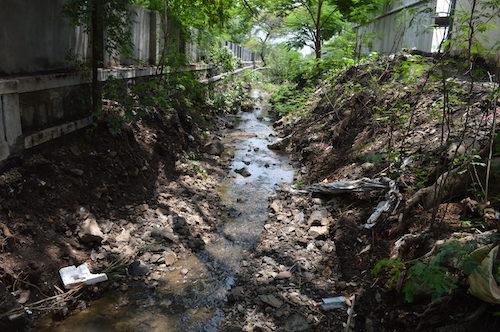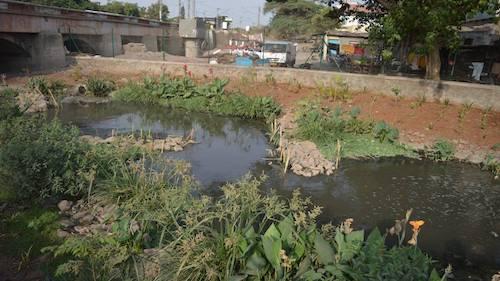Nala Restoration
Nalas are a part of the natural geography of a landscape. Nalas are formed as a result of the inherent unevenness of the land. As rainwater starts flowing from higher elevation to lower elevation by gravity, the channel carved out by this flowing water becomes a Nala. Nalas function as natural drainage channels whose primary function is to carry surface run-off during the monsoon. Generally, several Nalas join to form a Stream (Odha), several streams join to form a small river, and several small rivers join to form a big river, which eventually drains out into the sea.
Over the past 100 years or so, as the density of human settlements kept on increasing and mechanically irrigated agriculture began, the sewage from human settlements and irrigation runoff from the agricultural fields started entering the Nalas. Until the volume and pollution load of the sewage and fertilizer run-off entering the Nalas is within their 'carrying capacity', the Nalas are able to 'deal with' or 'treat' the pollution. This pollution is treated mainly by certain types of aquatic and semi-aquatic plants as well as by microorganisms found in the Nalas. However, once the volume and pollution load of the sewage exceeds the 'carrying capacity' of Nala, groundwater, surface water bodies such as ponds and lakes, as well as the soil is contaminated. When humans drink this polluted water, diseases such as diarrhoea and dysentery become common. On the other hand, when polluted water from the Nalas is used (without any treatment) for irrigating crops, the salinity of the soil increases over time, and the soil can become unproductive.
Kham River Restoration Mission
Projects

Kham River Restoration

MIT Nala Restoration
